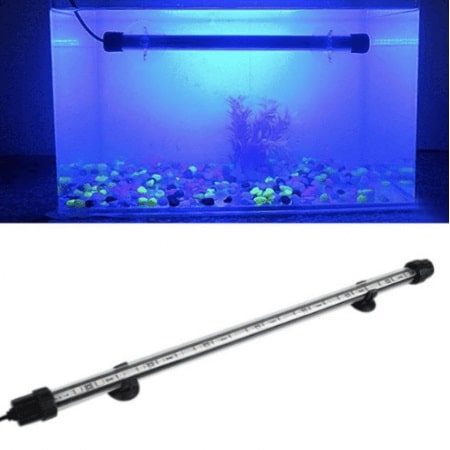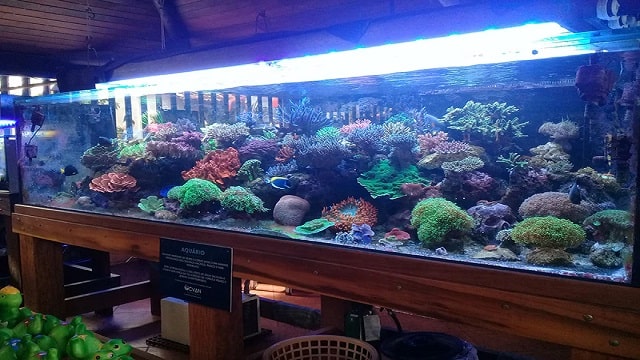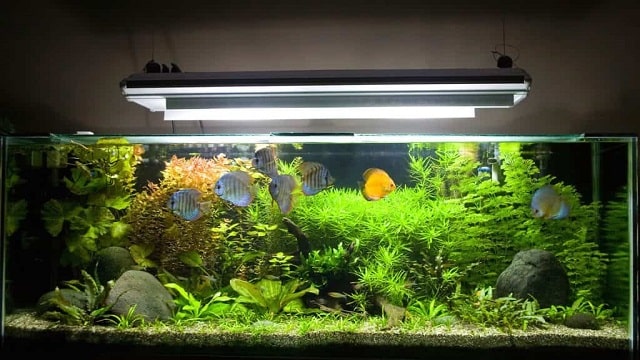There is a wide range of lamps to adapt to the aquarium, always depending on its characteristics and the type of ecosystem from which the fish come.
Lighting is one of the elements that is very important in aquariums. Although many believe that it is purely decorative or aesthetic, the truth is that it is a key element for the development of fish. Therefore, apart from knowing how to properly illuminate the aquarium, you will also have to choose which lamp is the most suitable to achieve greater well-being for both the animals and plants that are there. To achieve this, we will have to better understand the characteristics of the aquarium in terms of its shape and the type of fish and plants that are inside it, since the lamp will be one way or another.
The aim of the lamp is to create an ecosystem similar to that of fish. It is therefore advisable to alternate periods of light and darkness ranging from 8 to 12 hours. If there are also natural plants inside the aquarium, the duration of the lighting will have to be extended. Nowadays, the most common aquarium lamps are those with LED lights, as these generate greater savings in consumption and last longer.
Still, we are going to show you the different types of lamps that exist on the market with their different characteristics and prices: Related Article: Neon Fish: Characteristics And Necessary Care
Fluorescent tubes

This is a well-known option, as well as being the most economical, and can be found in different sizes, shapes, lighting and colours. It must be said that this type of lamp does not provide much heat to the aquarium. If in this case we are dealing with a marine aquarium, it is best to use tubes that emit a dark blue light, as it closely resembles the lighting that these fish usually receive in their normal ecosystem.
LED lamps
As mentioned above, they are also commonly used for aquarium lighting. These are characterized by their ability to adapt to both freshwater and saltwater aquariums. In addition, LED lamps can be perfectly adjusted to the size of the aquarium without causing any problems. Although their price is higher than those mentioned above, many people tend to choose this type of lamp for their aquarium since, apart from all these types of comforts, they are low consumption and long-lasting.
Metal halide lamps

These are the most expensive ones, but they also provide the most light. These types of lamps are usually very delicate both in their installation and in their maintenance since any type of friction on their surface can damage their mechanism. They are used above all in aquariums that contain reefs inside.
For a more complete lighting, there are people who mix these three types of lamps in their aquariums. They play with the characteristics that each one provides by alternating them. Related Article: Aquarium Air Pump Or Aerator: What You Need To Know
Mercury vapor lamps
This type is used for freshwater aquariums. We can find two varieties of this lamp, fluorescent or halogen. The first is usually used for individual lighting, although it is recommended that it is not used for very long, as this can cause the decrease of natural plants in the aquarium. The second is the most recommended for large aquariums. It requires a complex installation and usually offers different types of light power. Tips: How To Change Aquarium Water
Special care must be taken with aquariums in summer, because the lamps themselves generate heat for the animals and plants inside them, so the heat from outside can generate excess temperature that can be harmful to them. Therefore, the exposure to artificial light must be reduced and sometimes even the lamp must not be turned on so that this does not affect the animals’ breathing. Other tricks that are usually carried out in these cases are relocating the aquarium to less warm areas.
If this is your first time owning an aquarium and you are interested in lighting it for the health of your animals, it is recommended that you start with exposure to this artificial light for approximately six hours during the first month . After this time, the fish will have already adapted to this new place, so you can extend the duration of the lamp to 8 hours for a few months. After this period, the duration of the light can be up to 10 or 12 hours.
Therefore, by taking into account all the necessary care according to the species of fish that are found and the shape of the fish tank, there will be no doubt that the animals will be able to enjoy a well-kept environment in keeping with the ecosystem in which they were previously found.

